I’m not an anticipatory trader, at least not in the establish-a-position-and-hope-i’m-proven-correct way. I really prefer confirmation of the patterns I’m seeing to trigger actual entries on trades.
But not all of us are that way all the time, and that’s alright. So I want to clarify which kinds of setups are usually worth anticipatory entries, vs. those where confirmation should be seen first.
A Step Ahead
Anyone can anticipate a move, and in the market, most try to at least once. The default starting point is flawed though, and is along the lines of “I think we’re headed higher” or “XYZ is going to $15 by the end of the year.” But those are nonsense predictions [1] which should be left at home.
Worthwhile anticipations take into account not only current conditions, but also how they may continue to develop. They also allow for adjustments, which is a critical distinction for those who tend to get married to an opinion.
When it comes to making trades based upon anticipations, it’s imperative to stay flexible. If the plan you envision doesn’t pan out, be willing to modify it or ditch it completely. It’s also highly important to base your anticipation on the recent price action. If the recent moves give strong indications for another move, then you may have a good candidate on your hands.
These are the kinds of charts which would warrant an anticipatory play, and I’ve stripped the names from the charts so we can stay on point here with the overall idea:
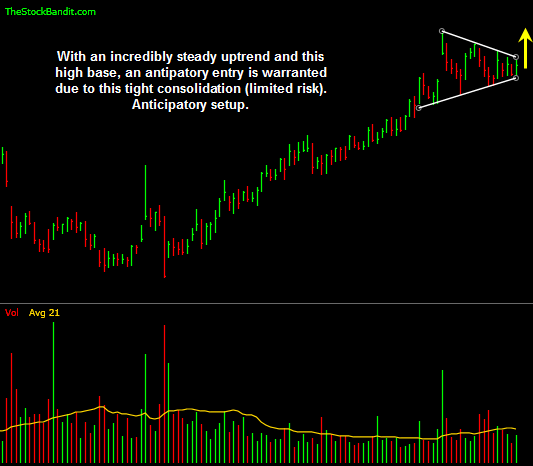
Chart courtesy of TeleChart [2]
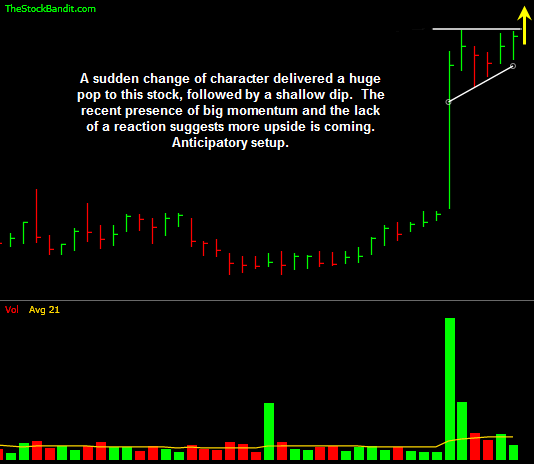
Chart courtesy of TeleChart [2]
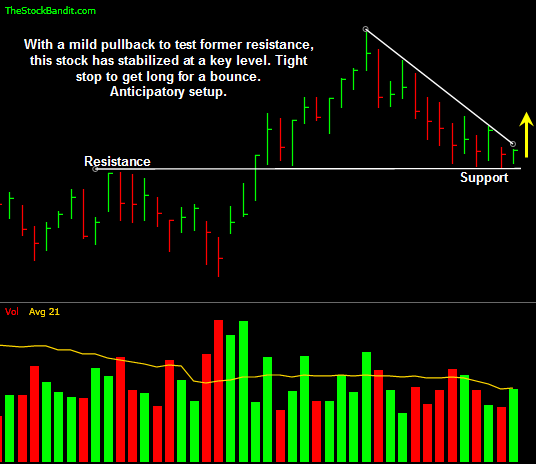
Chart courtesy of TeleChart [2]
Drawing The Line
As for confirmation plays, the whole key is to wait for price to make its move and then follow suit. For example, a stock churning just beneath key resistance for several weeks might get going again eventually, but jumping in arbitrarily is more likely to result in dead money for a little while.
The way I trade confirmation setups is to draw my lines in the proverbial sand, then act if price is able to cross those lines. My actions are a response to what price is actually doing, rather than what I think price will soon do.
These are the kinds of charts I’d consider for confirmation plays, again without details so you can focus on the general idea without bias:
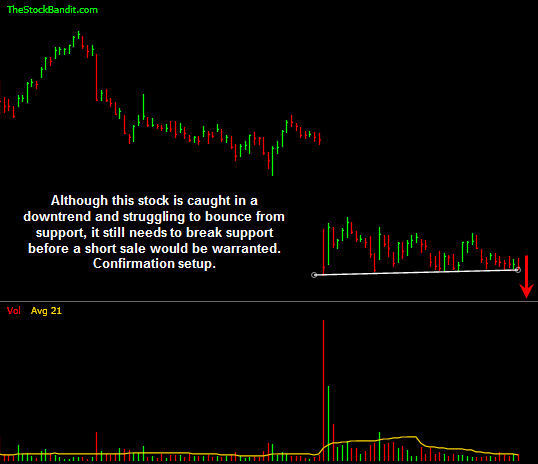
Chart courtesy of TeleChart [2]
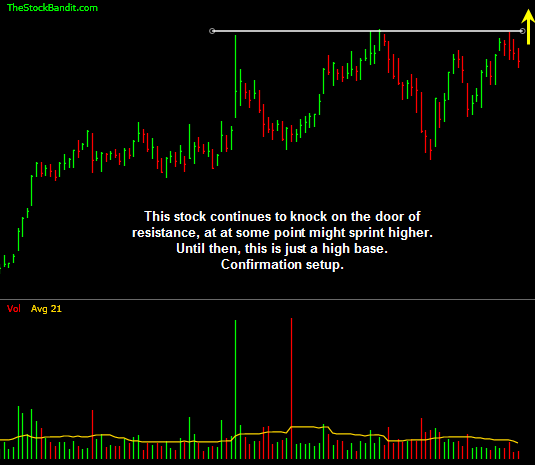
Chart courtesy of TeleChart [2]
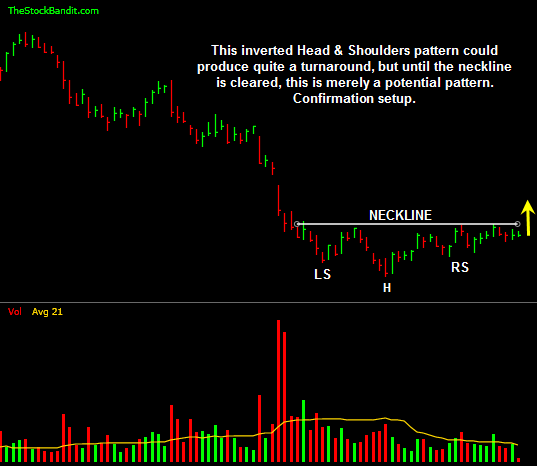
Chart courtesy of TeleChart [2]
Hopefully that gives you a little better framework for your next play as you decide whether to anticipate a move or wait for confirmation. Understanding the situations which call for an early entry can prevent added frustration in a game which already has enough.
Trade Like a Bandit!
Jeff White
Producer of The Bandit Broadcast [3]
Follow TheStockBandit on Twitter [4] or get our free newsletter [5] to keep up!